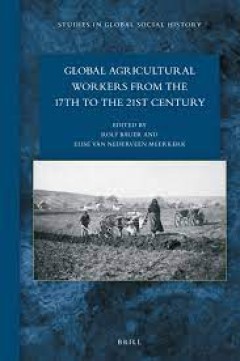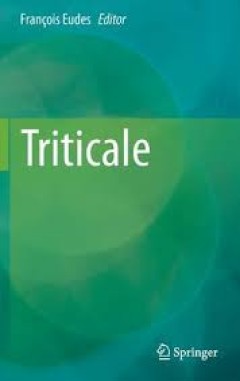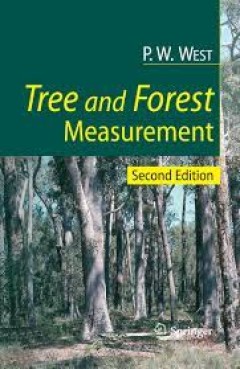Filter by

Global Agricultural Workers from the 17th to the 21st Century
Agricultural workers have long been underrepresented in labour history. This volume aims to change this by bringing together a collection of studies on the largest group of the global work force. The contributions cover the period from the early modern to the present – a period when the emergence and consolidation of capitalism has transformed rural areas all over the globe. Three questions h…
- Edition
- -
- ISBN/ISSN
- 9789004529427
- Collation
- -
- Series Title
- -
- Call Number
- -

A Flora of Cambridgeshire
This flora, published in 1964, was the first comprehensive account of Cambridgeshire's plants since Babington's of 1860. Based on records to the end of 1962, it details 1509 species. These comprise 27 pteridophytes, 3 gymnosperms, 1223 angiosperms and 256 bryophytes. The following information is provided for each of the species: scientific name; well-known vernacular name, if any; first known r…
- Edition
- -
- ISBN/ISSN
- 9780511693427
- Collation
- -
- Series Title
- Cambridge Library Collection - Cambridge
- Call Number
- -

True Truffle (Tuber spp.) in the World Soil Ecology, Systematics and Biochem…
This book focuses on the taxonomic diversity of the genus Tuber as economically important truffles. In contributions by internationally respected scientists, it examines truffle systematics, interactions with abiotic and biotic environments, strategies for spore dispersal, and molecular processes in truffles. Topics discussed include: evolutionary theories and phylogeny of Tuber species from As…
- Edition
- -
- ISBN/ISSN
- 978-3-319-31436-5
- Collation
- -
- Series Title
- -
- Call Number
- -

Tropical Tree Physiology Adaptations and Responses in a Changing Environment
This book presents the latest information on tropical tree physiology, making it a valuable research tool for a wide variety of researchers. It is also of general interest to ecologists (e.g. Ecological Society of America; > 3000 or 4000 members at annual meeting), physiologists (e.g. American Society of Plant Biologists; > 2,000 members at annual meeting), and tropical biologists (e.g. Associa…
- Edition
- -
- ISBN/ISSN
- 978-3-319-27422-5
- Collation
- -
- Series Title
- -
- Call Number
- -

Triticale
Triticale crop species has received substantial research support since the mid-20th century making it a commercial success in many countries, in diverse value propositions. However, no recent book captures the new knowledge and progresses made in more than 2 decades. The purpose of this work is to review and collate the new knowledge of triticale plant biology and agronomy, while considering th…
- Edition
- -
- ISBN/ISSN
- 978-3-319-22551-7
- Collation
- -
- Series Title
- -
- Call Number
- -

The Gentianaceae - Volume 2: Biotechnology and Applications
This book, the second of two volumes on the Gentianaceae, is devoted to aspects of biotechnology and their applications. It consists of 18 chapters and covers micropropagation by means of organogenesis or somatic embryogenesis, and single cell manipulation of various species belonging to the horticultural genera Blakstonia, Centaurium, Gentiana, Gentianalla and Swertia. Furthermore, the applica…
- Edition
- 1
- ISBN/ISSN
- 978-3-642-54102-5
- Collation
- XXVIII, 452, 91 b/w illustrations, 37 illustrations in colour
- Series Title
- -
- Call Number
- -

Tree and Forest Measurement
Forests must be measured if they are to be managed and conserved properly. This book describes the essential principles of modern forest measurement, whether using simple hand-held equipment or sophisticated satellite imagery. It particularly focuses on measuring forest biomass over large forest areas, a key aspect of climate change studies, as well as the volumes of wood that are commercially …
- Edition
- -
- ISBN/ISSN
- 978-3-319-14708-6
- Collation
- -
- Series Title
- -
- Call Number
- -

The Forest of the Lacandon Maya
The Forest of the Lacandon Maya: An Ethnobotanical Guide, with active links to audio-video recordings, serves as a comprehensive guide to the botanical heritage of the northern Lacandones. Numbering fewer than 300 men, women, and children, this community is the most culturally conservative of the Mayan groups. Protected by their hostile environment, over many centuries they maintain autonomy fr…
- Edition
- 1
- ISBN/ISSN
- 978-1-4614-9111-8
- Collation
- XXVII, 379, 38 b/w illustrations, 561 illustrations in colour
- Series Title
- -
- Call Number
- -

The Physiology of Microalgae
This book covers the state-of-the-art of microalgae physiology and biochemistry (and the several –omics). It serves as a key reference work for those working with microalgae, whether in the lab, the field, or for commercial applications. It is aimed at new entrants into the field (i.e. PhD students) as well as experienced practitioners. It has been over 40 years since the publication of a …
- Edition
- 1
- ISBN/ISSN
- 978-3-319-24945-2
- Collation
- X, 681, 65 b/w illustrations, 166 illustrations in colour
- Series Title
- Developments in Applied Phycology
- Call Number
- -
Industrial Crops: Breeding for BioEnergy and Bioproducts
The volume on Industrial Crop Breeding will be part of the series, Handbook of Plant Breeding. This volume will focus on the emerging area of plant breeding for sustainable production of transportation fuels and bio based products using the current advances in the field. The book is scheduled to consist of a total number of 30 chapters divided into four sections. The sections will emphasize cro…
- Edition
- -
- ISBN/ISSN
- 978-1-4939-1446-3
- Collation
- XVI, 444
- Series Title
- -
- Call Number
- 631 IND
 Computer Science, Information & General Works
Computer Science, Information & General Works  Philosophy & Psychology
Philosophy & Psychology  Religion
Religion  Social Sciences
Social Sciences  Language
Language  Pure Science
Pure Science  Applied Sciences
Applied Sciences  Art & Recreation
Art & Recreation  Literature
Literature  History & Geography
History & Geography